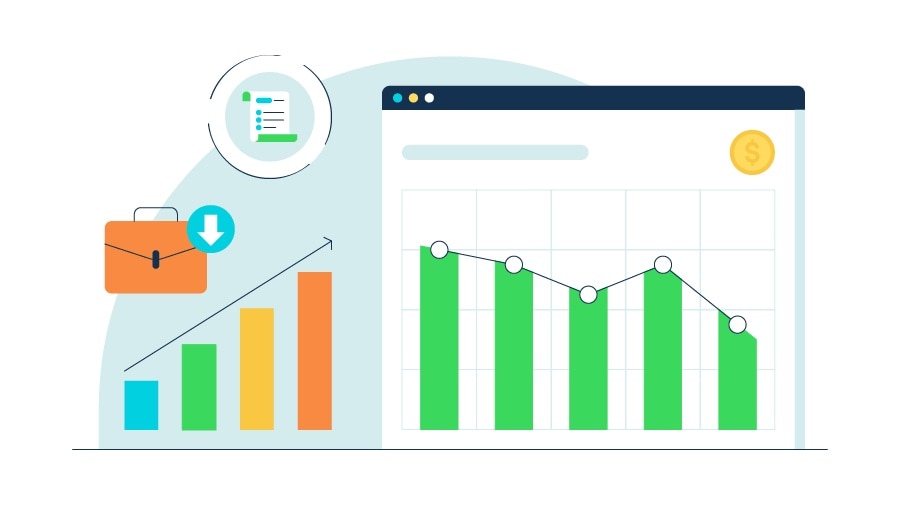If you manage payroll, sometimes you may receive a notice that you need to garnish an employee’s wages. What does this mean, and how does it work? In short, a wage garnishment is when a creditor seizes payment directly from the paycheque of someone refuses to pay a debt. The rules about this practice vary from province to province, and New Brunswick doesn’t allow it at all. In most of Canada, though, the process is pretty similar. Knowing what labour law says is the best way to get it right should you have to garnish any employee wages along the way.

Canadian Laws Governing Wage Garnishments
What Is a Wage Garnishment?
A wage garnishment is when an employer takes money out of an employee’s paycheque and sends it to the employee’s creditor. When someone doesn’t pay a debt to a creditor, the creditor has the right to take the funds by force. To establish that the debt is owed, the creditor must go to court and get a judgment against the debtor, and the court then issues a summons.
The summons allows the creditor to take the debtor’s personal assets to cover the debt. If there are no assets to sell, however, the creditor can demand a wage garnishment. Each province has different rules on which assets the creditor can take to satisfy a debt. For instance, in British Columbia, creditors can’t take the debtor’s household possessions or personal appliances.
Do Wage Garnishments Always Require a Court Order?
There are two situations where a court order isn’t required for a wage garnishment. When someone borrows money from a credit union, they typically sign an "assignment of wages" agreement. That means they agree to have the debt taken from their wages, and the credit union doesn’t have to get a court order to start the garnishment process. Similarly, the Canada Revenue Agency can initiate a wage garnishment for back taxes without a court order.
Do You Have to Comply With a Wage Garnishment?
If you receive an official notice that you need to garnish an employee’s wages, legally you must follow through with the demands on the letter. With tax debt in particular, you can be held personally liable if you don’t remit the required amounts. On top of that, you can’t fire an employee for a wage garnishment, reduce their hours, or punish them in any other way.
How Much Are Wage Garnishments?
The amount of the wage garnishment varies based on the amount of the debt and the rules in your province. For instance, in British Columbia, creditors can garnish 30% of your employee’s wages. If you live in this province and receive a wage garnishment for an employee who earns $1,000 per week, typically you have to send the creditor $300, since that’s 30% of $1,000.
In contrast, some provincial laws don’t take a fixed percentage of the wages for garnishment. Instead, the rules say the worker gets to keep some money for living expenses before some or all of the remainder is garnished. In Alberta, for instance, workers get to keep the first $800 of their monthly earnings. After this amount, creditors can garnish 50% of the paycheque up to $2,400, and they can garnish 100% of income above that amount. Imagine you pay an Albertan employee $4,000 per month. The employee keeps the first $800, splits the next $1,600 evenly with the creditor, and gives the final $1,6000 to the creditor. In sum, the employee gets $1,600, and the creditor gets $2,400.
What’s the Garnishment Process?
If your employee’s wages are about to be garnished, expect your business to be served an official order related to the garnishment. With CRA garnishments, you may only receive a letter in the mail. This letter shows how much your employee owes, tells you how to calculate the garnishment, and instructs you on where to send the funds. When payroll rolls around, you figure out how much your employee earned, as usual. But instead of drafting a cheque for the entire amount, you subtract the amount for the wage garnishment and draft your employee a check for the remainder. Finally, you send the garnished amount to the creditor as instructed.
What Happens to People Who Don’t Have Jobs?
When someone doesn’t have a job, their wages can’t be garnished, but creditors can still claim the funds they owe. In this situation, creditors may take money directly from the debtor’s bank account. In some cases, the creditors may even have the right to contact the debtor’s clients or anyone else who owes the debtor money and request the funds from those people.
When you receive a wage garnishment demand for the first time, it can be confusing, but the process is fairly straightforward. If the garnishment demand is missing any details, use the contact information supplied to reach out with questions. Also, remember that your employees may feel embarrassed about the situation, so be as discreet as possible to protect them. Ideally, you should let your employees know about the garnishment in advance so they’re not surprised by a smaller-than-expected check, but you should also take care not to make them feel awkward or at risk of punishment.


